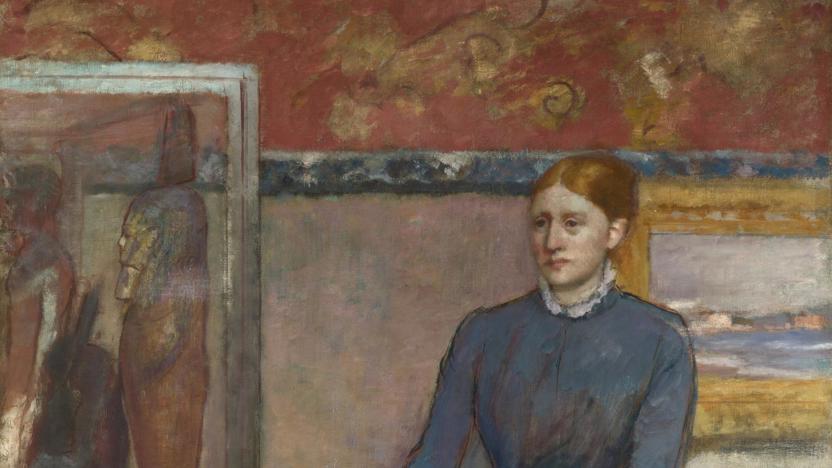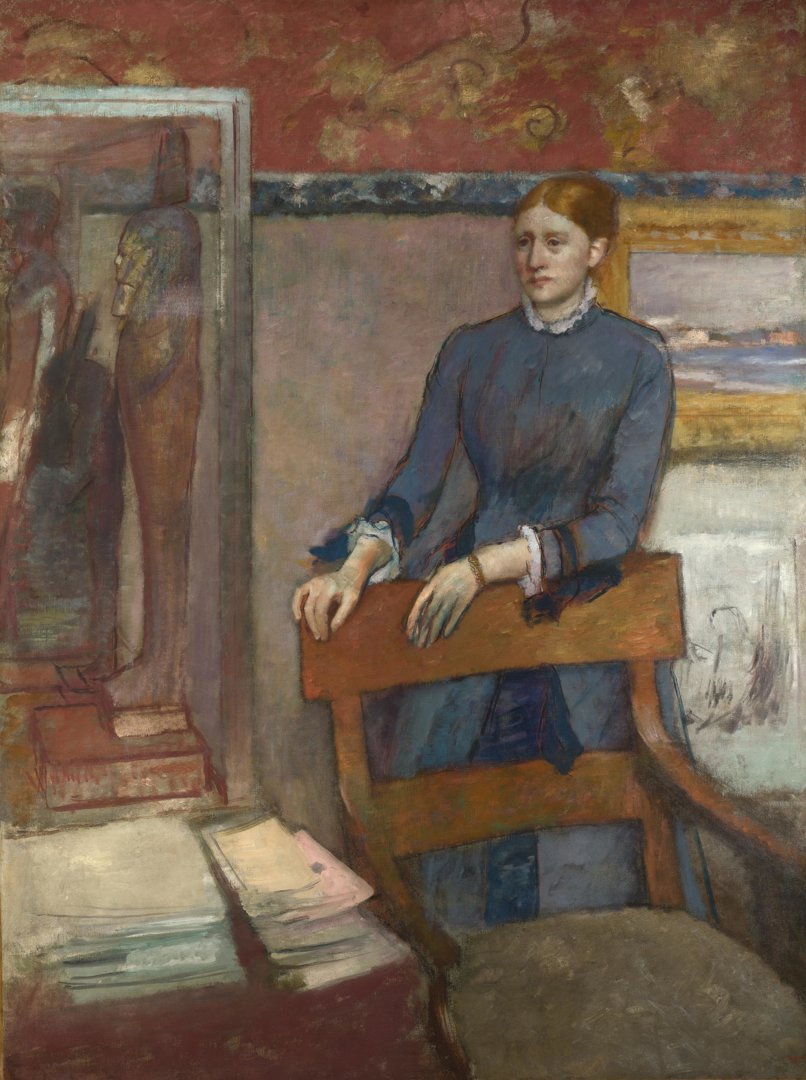Hilaire-Germain-Edgar Degas's 'Hélène Rouart in her Father's Study'
Audio description
This is a description of the portrait of 'Helene Rouart in her Father’s Study' by Edgar Degas, painted around 1886. It is oil on canvas, just over 1 and half metres high, by 1.2 metres wide. It is in a gold frame.
A twenty-three year old woman in a muted blue dress stands to the right, behind a huge wooden chair with arms, her feet and the hem of the dress obscured by it. She is in a small study, hemmed in by a desk on the left and the wall behind her. Slightly turned, and looking to the left, her hands and left forearm rest on the back of the chair, which comes up almost to her waist. It fills the lower right of the painting and is plain, with two horizontal wooden slats that form the back, and a muted green upholstered seat.
Helene’s red hair is parted in the middle and secured behind her head. Her lips are pink, her eyes dark, and her expression a little melancholy. Her blue day-dress is high at the neck and tight at the waist, gently flaring out over her hips. The three-quarter length sleeves are trimmed with darker blue ribbon, and the small frills of a white collar and cuffs are just visible.
The desk on the left is covered in an orange cloth, with two stacks of white documents on it, in the foreground. Behind them is a huge glass display case, partially cut off by the left hand side of the painting, but reaching almost to the top. It contains three tall Egyptian statuettes in a row, going back in space away from us, their stiff upright poses echoing Helene’s pose. A light source from the left catches the silvery metal frame of the case and glints on the glass.
To the right of the lilac-coloured wall behind Helene are two pictures , one above the other. At the top is a seascape in a gold frame by Corot from 1828. Below that, in a pale frame, is a sketchily painted drawing by Millet of a seated peasant girl from the early 1850’s.
Running across the top of the wall, above Helene’s head, is an orange-red, Chinese silk wall hanging, with a blue border at the bottom. It’s decorated with golden kylins, mythical creatures that look a little like stylised lions.
Degas’s brushstrokes are visible and textured, with colours layered over each other, using a technique known as scumbling. For example greens and golds show through the lilac of the wall, reds through areas of the dress. Dark blue outlines are visible, particularly round the dress and Helene’s left hand. Her fingers are heavily shadowed in blue-green. These darker tones contrast with the oranges and blues, centred on Helene’s red hair and blue dress.
The portrait is unusual in that the setting tells us little about Helene herself and more about her father, Henri, whose study it is. Degas only painted portraits of family and people he knew well and he and Henri Rouart were close friends. Henri painted landscapes and had exhibited with Degas and the Impressionists. He was also a great collector of artefacts from Egypt, which he had visited, but also of contemporary French art.
The huge chair belonged to the family of Helene’s mother. She became ill and died the year this portrait of her daughter was painted, which may account for Helene’s melancholy expression.


